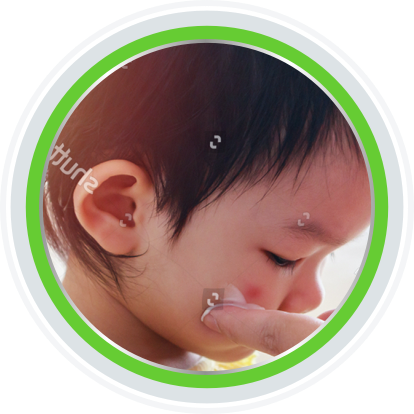Understand bruises
Every person experiences different injuries at least once in their lifetime - walking into sharp coffee table corners, grazing into a wall or even stubbing a toe. Sometimes these injuries, although not life-threatening, would manifest on the body in the form of a bruise. We’ve all seen one: blue and black, splotchy, sometimes big and other times small. But what are they, really, and are they only caused by injuries? If so, how can this be avoided?
When the capillaries (small blood vessels) under the skin break, patches form when the blood they carry flows into the soft tissue beneath the skin and cause discoloration. Often, on fair skin, the color of the bruise appears bluish or purple, while on darker skin, they may appear dark purple, brown or black1. Bruises are also called contusions. Note also that there is no external bleeding unless there is a break in the skin2. Despite this, a bruise can still cause some extent of pain or feel tender or swollen.

In medical terms, there are various types of bruises depending on the location, type of injury that caused the bruise, and its appearance. A hematoma is caused by trauma such as vehicular accidents or major falls; these result in heavy bruising and damage to the skin and tissue. These often cause pain and swelling. A black eye is often caused by a blow to the head which causes blood and fluid to flood under the eye to form a ring around it. Sometimes a black eye points to a more serious eye injury such as a facial fracture. Purpura refers to bruising caused by minor bleeds under the skin, while senile purpura refers to easier bruising when the skin ages and gets thinner. Petechiae refers to reddish dots that do not become white even after pressure is applied2.

Individuals who play contact sports - such as athletes - get contusions, so much so, that bruises are one of the top leading causes of sports injuries. Although bruises are generally not serious conditions, severe ones cause tissue damage (such as in hematomas) and may render an athlete unable to perform their sport for several months. Contusions of this type are characterized by pain, swelling and limited range of motion near the injury. If there is serious tissue damage, they may also have a broken bone, dislocated joint and torn muscle6.
Some people are more likely to bruise than others due to age, medical history or conditions or bleeding disorders. Having cancer or liver disease increases chances of bruising and so does having relatives who bruise easily. If you are taking blood thinners or aspirin - both which prevent clotting - or nonsteroidal anti-inflammatory drugs (NSAIDs) for pain, you are also more prone to bruising. Contusions may also be due to bleeding disorders such as hemophilia and von Willebrand disease. A low blood platelet count and a vitamin C or K deficiency may also be the culprits for easy bruising2.

Although bruises are a natural response of the body, it is still prudent to avoid them wherever possible. Minimize tripping hazards in one’s house or room like shoes strewn on the floor or even rugs. Furniture should be moved away from walkways or doorways so there will be less chance of bumping into them. When walking in the dark, be sure to switch on the light or bring a flashlight to see your way through. Wear proper protective gear when playing contact sports, cycling or riding a motorcycle. Ensure that you are getting sufficient vitamins5. Ensuring all of these boxes are checked can go a long way in dealing with bruises, and if your symptoms persist, be sure to consult a healthcare professional immediately.
REFERENCES:
- What are bruises? https://www.nhs.uk/common-health-questions/accidents-first-aid-and-treatments/what-are-bruises/. Accessed 20 Sept. 2020
- Bruises: Types, Causes, Diagnosis, Treatment & Prevention. https://my.clevelandclinic.org/health/diseases/15235-bruises. Accessed 20 Sept. 2020
- Bruise: First aid. https://www.mayoclinic.org/first-aid/first-aid-bruise/basics/art-20056663. Accessed 20 Sept. 2020
- Bruises Management and Treatment. https://my.clevelandclinic.org/health/diseases/15235-bruises/management-and-treatment. Accessed 20 Sept. 2020
- Bruises Prevention. https://my.clevelandclinic.org/health/diseases/15235-bruises/prevention. Accessed 20 Sept. 2020
- Muscle Contusion (Bruise). https://orthoinfo.aaos.org/en/diseases--conditions/muscle-contusion-bruise. Accessed 20 Sept. 2020


